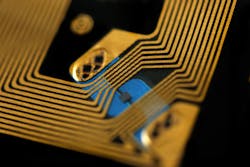Evolving from Barcodes to QR Codes to RFID Tags
In 1974, two Drexel University students found that an oscillating mirror laser could scan and read barcodes, their solution for more efficient grocery store management.
Quick-response codes, or QR codes, came as the next part of the barcode technology family with the capability to scan alphanumeric data. Following the modern design’s development in Japan in 1999, radio-frequency identification (RFID) systems came into play.
Barcodes and RFID tags differ in that barcodes use destructive programming while RFID tags use non-destructive programming. Additionally, RFID tags can better differentiate between two similar products. For example, it could distinguish between a bag of small and large peas where the barcode scanner would only pick up on one type.
To learn more about the evolution of identification technology, read this article from partner publication Control Design.

